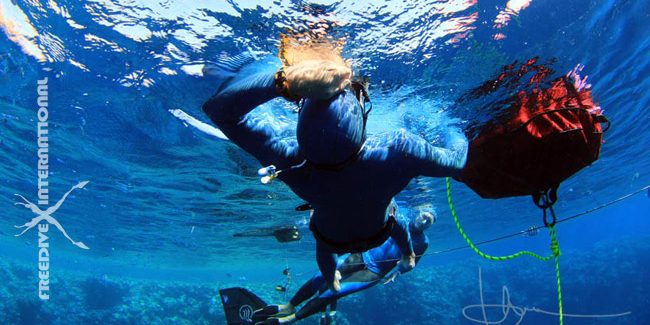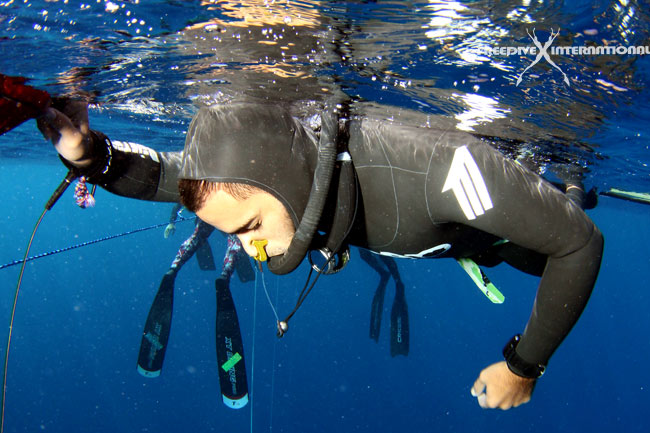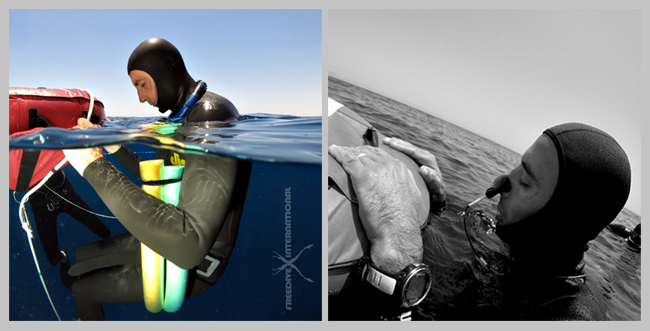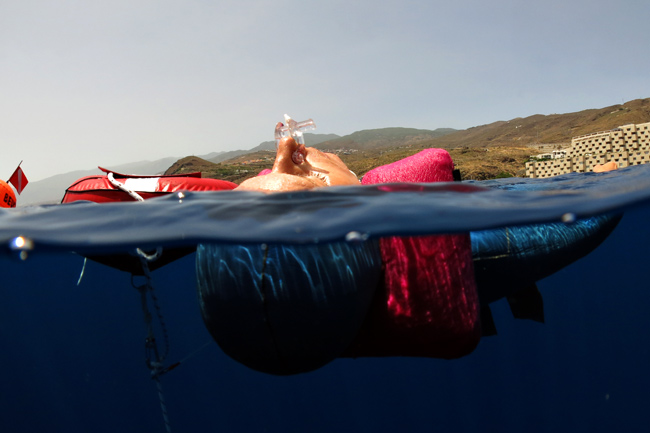What is the best breathe-up position?
This may seem a not so crucial topic, but one can almost say that the breathe-up is the most important part of a dive.
Why?
The breathe-up is when we are getting mentally ready for our dive, and relaxation has the biggest role in this process. So it is very important that we spend the last few minutes in the most possible relaxed state. This is why our breathe-up position in the water should not be under evaluated.
There are 3 different breathe-up positions to choose from; we will see them and mentions pros and cons of each one.
1 – FACE-DOWN BREATHING THROUGH SNORKEL
This is what we normally teach beginner freedivers. Beginners often struggle with relaxation, especially in the open water, and this position is the least challenging and more “stable”.
Usually, when they become more advanced and start diving deeper, more and more freedivers abandon this technique. However, there are still a significant number of deep freedivers who do snorkel breathe-up for their maximal dives, even to 100+ meters, so you should not assume that this position is not good for advanced freediving.
Photo: Ahmad Abbas, Kuwaiti record holder and freediving instructor, often comes to Freedive Dahab to run his training camps.
Some advantages:
1-Laying face-down on the surface allows for maximum physical relax
2-Having your face (and ears) in the water keeps away a lot of noise and distractions (your buddies talking while you are trying to prepare for example).
3-If you dive with noseclip, having your bare face in contact with the water awakens the dive reflex faster
Some disadvangates:
1-Some freedivers feel that they can take a bigger final breath without the snorkel
2-Those who still practice “packing” cannot do a snorkel breathe-up as packing through a snorkel is very complicated.
3-When you dive deep you dont want to have the snorkel with you during the dive, so you will have to leave it on the surface and either securing it on the buoy after your last breath, or just leaving on the surface (hoping that your buddy will remember to take it before it sinks or float away)
2 – VERTICAL WITH HEAD OUT OF WATER
Some freedivers simply hold to to the buoy for support, while others sit on a pool noodle
Photos: Romanian record holder Walter Chivescu during his training with Freedive Dahab, and Hussein Odaiba, freediving instructor.
Some advantages
1-Sitting on a noodle can be very comfortable for many people (much more than the variation without noodle)
2-You dont have to deal with having a snorkel to secure somewhere after your last breath
3-Most freedivers feel they can take a bigger breath then with the snorkel, especially with the noodle variation (as their upper body is higher out of the water and less water pressure is applied to the lungs during the last inhale)
Some disadvantages
1- Holding to the buoy for support require some effort, and this position is one of the least relaxing from a physical point of view.
2- For who uses a pool noodle: noodles are attached to buoys with strings, which often causes the freediver to get entangled on them, blocking their start. It requires some practice to learn how to handle the noodle on the surface to avoid getting stuck on it.
3- Having your whole head out of the water will not block noise out; if you get easily distracted or annoyed by outside noises, this might not work for you
3 – LAYING ON BACK
Some people use travel pillows or pool noodles for extra support of head and feet.
Photo: Freediving world champion Alenka Artnik during one of her training sessions with Atlantis Freediving.
Some advantages:
1- It can be very relaxing if the surface is flat
2- Many freedivers feel that they can take more air this way
3- You don’t have to worry about securing your snorkel somewhere after your last breath
Some disadvantages:
1- If you dive in rough conditions this won’t work because water will splash in your mouth
2- You lose your bearings of your position at the buoy and you cannot control your starting spot unless you have a buddy holding you in place. If there are surface ropes around you, you can easily get stuck during the duck dive
3- If you use a pillow or noodle, the strings holding them to the buoy you can get entangled in them
4- If you wear a heavy neck-weight you might feel it pressing against your throat
Photo credits: Linda Paganelli










